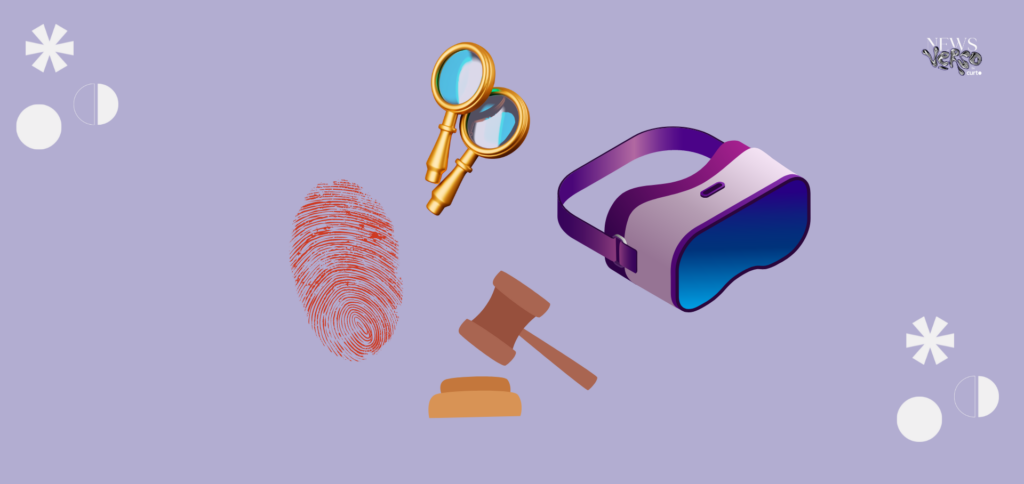The technique has become common in several countries, including Brazil, as is the case of Rio de Janeiro e Federal District.
ADVERTISING
Two Swiss cases used this technology and were reported in an article written with the participation of Michael Thali, Director of the Institute of Forensic Medicine at the University of Zurich: the first of them involved a Swiss man who murdered his wife in the bathroom of his home. The killer, who died while serving his prison sentence, had first attempted to murder his wife several years earlier in Mallorca, smashing her against a wall with his car as she left the house. The attempt failed and data captured by the forensic tomography of the body was used to recreate details of the previous attack in a reconstruction of the events.
Dr Michael Thali reports that, after the car attack, the wife suffered from amnesia and the husband told the police that she had fallen from the first floor of the house. However, footage and forensics told a different story, and the evidence helped convict the man who killed his wife to claim a large life insurance policy.
Augmented reality in judgments
In addition to the great potential in clarifying crimes using the virteptic technique, the point that I would like to draw attention to, however, is that the use of the virteptic technique linked to the use of immersive technologies can enhance, in addition to the accuracy in identifying the type of injury and how it was done, in the most accurate reconstruction of the crime.
ADVERTISING
With the use of overlapping technologies (virthopsia and immersive technologies in trials), the reconstruction of crimes with the demonstration of the types of injury in a precise way, can assist in trials, not only from a persuasion scenario, as in the case of reconstruction of crimes in 3D format, but with the production of technical evidence fundamental to the outcome of a case.
To visualize this more precisely, let’s think about the following fictitious example:
“It was a Saturday morning and the tranquility of the small town of Riverside (not its real name) was interrupted by a shocking crime: the body of a young man was found on the riverbank. The victim, identified as Marcos Silva (fictitious name), had gunshot marks on his body and signs of violence. The local investigation team began working on the case, but clues were scarce and the killers appeared to have left few traces.
ADVERTISING
The investigation led the team to a small bar on the outskirts of town, where Marcos was last seen with a group of suspicious men. Based on statements and analysis of security cameras, the team was able to identify two suspects, Lucas and Rafael (fictitious names), who were arrested and taken to trial.
To help clarify the facts, the investigation team used virtopsy technology, which allows a detailed analysis of the victim's body in 3D, including the precise visualization of internal organs and injuries. With the help of virthops experts, new clues were found that indicated that the weapon used to kill Marcos had been a specific pistol, belonging to Lucas.
During the trial, the prosecution team used immersive technologies and augmented reality to present the evidence in a more technical, clear and impactful way to the jury. With augmented reality glasses, jurors and all other participants in the trial were able to view the crime in real time, simulating the environment where it occurred and viewing the evidence in a more interactive, clear way and demonstrating virtopsia.
ADVERTISING
With the help of technology, it was possible to indisputably clarify who was responsible for the crime and sentence Lucas and Rafael to prison. The use of advanced investigation and trial technologies has allowed justice to be served more accurately and fairly, ensuring that those responsible are held accountable for their actions.”
(I used CHAT GPT to help me write this report in narrative format 🙂).
With this, bringing a long-term vision to trials around the world, we can consider that immersive technologies linked to already existing techniques such as virtopsia, could be fundamental tools to guarantee the clarification of crimes and guarantee the good result of the process.
ADVERTISING
Research with the help of augmented and virtual reality is evolving around the world
No Tech Trends Report 23 by Amy Webb, one of the most respected futuristic reports in the world and launched on the 11th, at the SXSW Festival, in Austin, Texas, shows that the evolution of crime scene investigation and remote simulations are evolving in several countries.

In addition to the Zurich Institute of Forensic Medicine that we mentioned, Tech Trends reports that a London research agency, based at Goldsmiths University, used virtual reality technology to model a 3D environment while investigating human rights abuses, sharing its work with parliamentarians , popular surveys and also for the United Nations.
Using this type of experience, therefore, could bring a revolutionary vision of what court investigations and trials could be like in the future.
To consult the reference, click on here!
Read more from our collaborator:

Sílvia Piva is a lawyer, master and doctor in Tax Law. Piva is part of a law firm and teaches postgraduate courses on tax topics. A technology enthusiast, she is a researcher at USP's Institute for Advanced Studies on human-technology symbiosis. Furthermore, she is one of the founders of Ex nunc metaverse, the first legal metaverse in Brazil.





